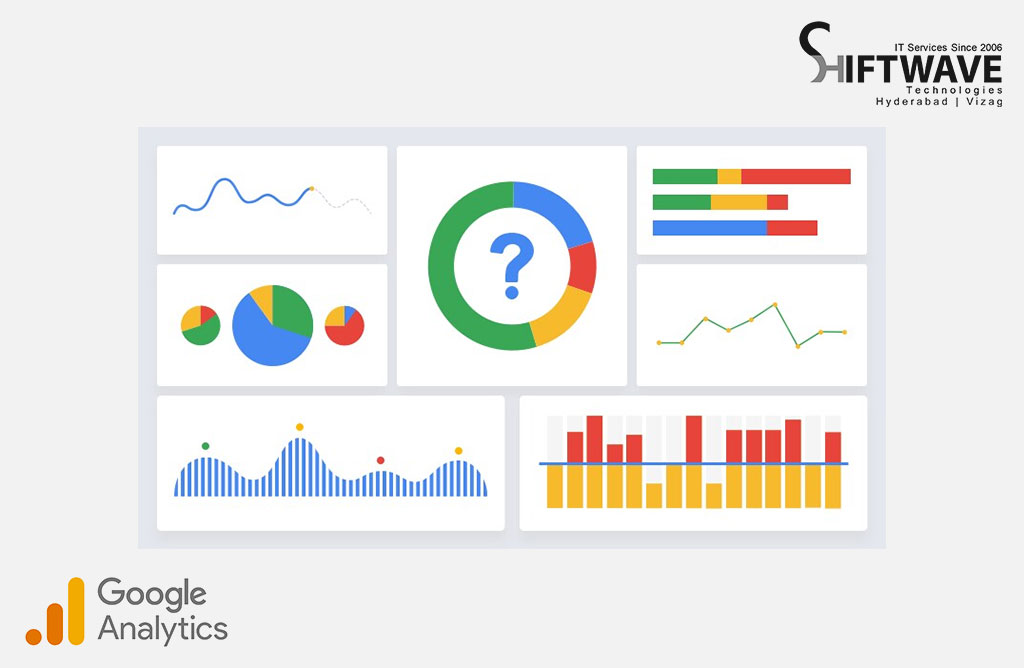Google Analytics 4 Migration Adventure Checklist
Home » Blog » Google Analytics 4 Migration Adventure Checklist

In the ever-evolving world of digital marketing, staying ahead of the curve is essential. Businesses are constantly seeking innovative ways to enhance their online presence and reach their target audience effectively. One of the key tools that has revolutionized the way we track and analyze website data is Google Analytics. It provides valuable insights into user behavior, helping businesses make data-driven decisions.
With the introduction of Google Analytics 4 (GA4), the digital marketing landscape is once again evolving. It’s essential for businesses to migrate to GA4 to harness its new features and capabilities. In this blog, we’ll embark on a GA4 migration adventure and provide you with a comprehensive checklist to ensure a smooth transition.
1. Understanding GA4: Setting your Course
Before you embark on your GA4 migration journey, it’s crucial to understand what GA4 is and what it offers. GA4 introduces a new approach to tracking user interactions and provides more comprehensive cross-device and cross-platform analytics. It’s designed to adapt to the evolving digital landscape and user privacy concerns.
To set your course for a successful migration, begin by familiarizing yourself with the key features of GA4. Understand the differences between Universal Analytics and GA4, and how the new event-based tracking model works. This foundational knowledge will be your compass throughout the migration process.
2. Backing Up your Data: Charting Safe Waters
Any voyage into uncharted waters begins with ensuring the safety of your valuable cargo. In the case of GA4 migration, your cargo is your historical data. Before making the transition, back up all your existing Universal Analytics data to ensure you don’t lose any crucial insights.

Google provides tools to export your Universal Analytics data to GA4, preserving your historical data while you set sail into the new analytics horizon. Make sure to have these backups in place to avoid data loss during the migration.
3. Tag Management: Hoisting the Flag
A crucial aspect of the GA4 migration adventure is managing your tracking tags effectively. Transitioning to GA4 may require updating your tracking tags, and it’s essential to ensure they are correctly implemented.
Consider using Google Tag Manager to streamline the process. Update and test your tags to ensure they accurately capture user interactions and events on your website. This step is vital in hoisting the flag of accurate data collection for your GA4 voyage.
4. Data Layer: Mapping the Treasure
In the world of analytics, data is your treasure. To navigate effectively in GA4 waters, you need to ensure that your data layer is properly configured. The data layer is the foundation for tracking user interactions and events.
Map out the data layer structure for your website, ensuring it aligns with GA4’s event-based tracking model. This step is essential to ensure that you’re capturing all the valuable data points needed for in-depth analysis.
5. Implementing GA4: Raising the Anchor
With your preparations in place, it’s time to raise the anchor and implement GA4 on your website. Google provides detailed documentation and installation guides to help you with this process. Make sure to follow these guides meticulously to ensure a smooth implementation.

Remember to configure your GA4 property correctly, set up data streams, and verify that data is flowing correctly into your GA4 reports. This is a pivotal moment in your migration adventure, as it marks the official transition to GA4 analytics.
6. Event Tracking: Navigating User Interactions
Event tracking is the compass that guides you through the sea of user interactions on your website. In GA4, event tracking is more flexible and robust than ever. Use it to track user actions such as page views, clicks, video views, and more.
Navigate the event tracking capabilities of GA4 to gain deeper insights into user behavior. Implement custom events that align with your business goals and track them effectively. This will help you understand how users engage with your website and optimize your digital marketing strategies accordingly.
7. Goals and Conversions: Plotting the Course to Success
Plotting a course to success in the digital marketing world often involves setting goals and tracking conversions. GA4 offers enhanced capabilities for goal tracking and conversion measurement.
Define your business objectives and set up conversion events in GA4. Track how users move through your conversion funnel and identify areas for improvement. This data will be invaluable in optimizing your digital marketing efforts and achieving your desired outcomes.
8. Enhanced E-commerce Tracking: Counting your Treasure
For businesses involved in e-commerce, counting your treasure accurately is paramount. GA4 offers enhanced e-commerce tracking that provides detailed insights into the customer journey, from product views to purchases.
Implement enhanced e-commerce tracking in GA4 to monitor product performance, cart abandonment rates, and revenue generation. Use this data to fine-tune your online store and increase your e-commerce revenue.
9. User-ID Tracking: Personalizing the Experience
In the age of personalization, tracking user behavior across devices and sessions is essential. GA4’s User-ID tracking feature allows you to do just that.
Implement User-ID tracking to gain a deeper understanding of user behavior and deliver a personalized experience. This feature is particularly valuable for businesses looking to engage users across multiple touchpoints.

10. Data Streams: Charting Multiple Oceans
In the vast digital ocean, your business may have multiple websites or apps to manage. GA4 allows you to chart multiple oceans by setting up different data streams within a single property.
Configure data streams for all your digital assets, ensuring you can analyze data collectively or individually. This capability simplifies reporting and analysis for businesses with diverse online properties.
11. Cross-Domain Tracking: Navigating between Islands
Navigating between islands of digital presence is common for many businesses. If you have multiple domains or subdomains, GA4’s cross-domain tracking feature is your compass.
Configure cross-domain tracking to ensure seamless user tracking as they move between your various online properties. This is vital for businesses with complex online ecosystems.
12. Testing and Debugging: Avoiding Icebergs
As with any voyage, unexpected challenges may arise. To avoid hitting icebergs during your GA4 migration adventure, thorough testing and debugging are essential.
Test all your GA4 implementations rigorously to ensure data accuracy. Use Google’s debugging tools and monitor your reports closely during the transition phase. Address any issues promptly to maintain the integrity of your analytics data.
13. User Permissions: All Hands on Deck
Managing user permissions is crucial to ensure that the right crew members have access to your GA4 analytics. Define roles and permissions for team members based on their responsibilities.
Grant access to the GA4 property only to those who need it, and regularly review and update permissions to maintain data security.

14. Data Retention and Compliance: Navigating Regulatory Waters
In today’s digital landscape, compliance with data privacy regulations is a priority. GA4 provides tools and features to help you navigate these regulatory waters.
Configure data retention settings in GA4 to align with your data privacy policy and legal requirements. Stay informed about updates to privacy regulations that may impact your analytics practices.
15. Training and Documentation: Equipping your Crew
Finally, equip your crew with the knowledge and resources they need to navigate the GA4 analytics sea effectively. Provide training sessions and create documentation to guide team members through the new GA4 interface and reporting capabilities.
Keeping your crew well-informed and prepared is essential for harnessing the full potential of GA4.
Conclusion
The GA4 migration adventure is a journey into the future of digital analytics. By following this comprehensive checklist, you’ll be well-prepared to navigate the transition successfully. From understanding the fundamentals of GA4 to setting up advanced tracking and ensuring data compliance, each step is crucial in charting a course to digital marketing success.
As you embark on your GA4 migration adventure, remember that the digital marketing landscape is constantly evolving. Stay updated with the latest trends in digital marketing, whether you’re in Hyderabad or Visakhapatnam, and consider leveraging the expertise of digital marketing services in Visakhapatnam and Vizag, such as those offered by Shiftwave (www.shiftwave.com).
By combining the power of GA4 with the latest digital marketing trends, you’ll be ready to set sail into a future of data-driven success in the dynamic world of digital marketing. Safe travels!




